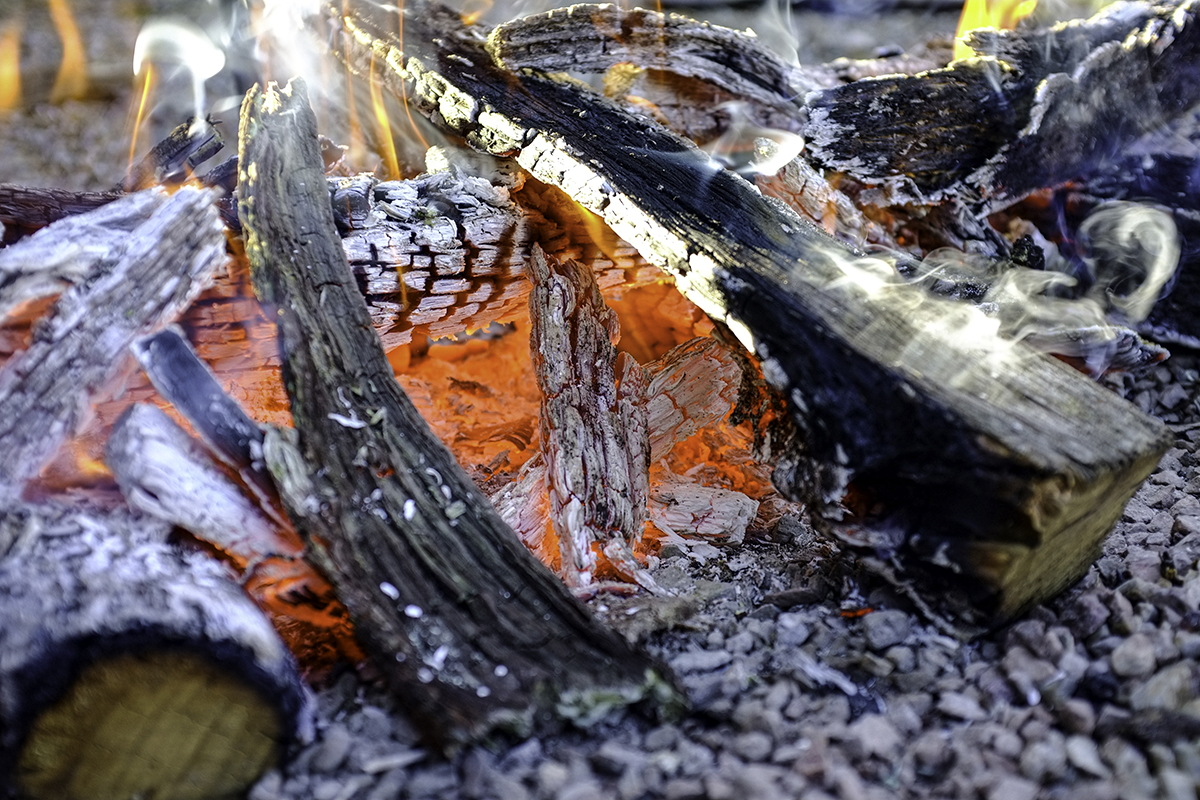Light the campfire with confidence
To Build a Fire
There really are only two ways to light a fire: on accident, and on purpose.
I once lit my entire front yard on fire in what I like to call a ‘learning experience with Shellite’ and my wife calls ‘the reason I’m not allowed near the BBQ ever again’.
For those of you who don’t think that running around trying to stomp out flames in your thongs is a good idea, read on for some hot fire tips.
1. The Good Wood
Fire needs three things: fuel, oxygen and heat. Choosing good fuel is half the battle, unless you’re in space. Then oxygen is your main problem.
Green gum branches with leaves are a great choice if you want a crackling, smoke bomb of a fire that lasts 30 seconds and makes a stinking pile of cold ash.
For a half decent campfire that’ll warm both dinner and your cockles, you’re going to be looking for dead wood that’s off the ground: gum branches caught in scrub, gidgee, jarrah, ash. Anything that’s cracking dry will work.
As many national parks crack down on firewood collection (and fires), it is becoming more common to buy your wood before each trip. The biggest mistake many campers make is not buying as much kindling, by weight, as firewood.
Those half-cured redwood logs in plastic bags from the Shell station on the corner will eventually burn, in the same way that steel or brick will burn if subjected to temperatures which normally only occur in the Sun’s corona.
Expect to spend half a bag of kindling getting each log to catch and stay lit, and if you can, spend some time splitting the 3kg logs into something more manageable.
2. Architectural Digest
In building the perfect fire, arson and architecture become temporary bedfellows, with most people relying on either the ‘log cabin’ or ‘teepee’ design.
The trick is to build your fire, essentially, upside down: little stuff at the bottom to get hot fast, building slightly thicker sticks, or branches, until the fire is hot enough to light up your gas station furniture reject gum logs.
Airflow is key, keeping room for the fire to draw its own oxygen in, unless you hate your eyebrows and love crouching down next to a furnace, sucking in ash and hyperventilating until you feel like throwing up.
If that does sound exciting and rewarding, it might be worth looking up your local blacksmithing club.
3. Secrets from the Bush
It is a problem as old as man’s harnessing of flame: how to keep your belly and your bum warm at the same time without looking like a rotisserie chicken next to the fire. A small shovel full of coals from the heart of the fire under your camp chair is a minor miracle in wrap-around heating, lasts for ages and will reduce your need to get up to beer missions and pee breaks.
If you need to put a fire out at night, always use water. Burying it in sand or soil can just insulate it, creating a hidden smouldering booby trap.
Use firelighters. Liquid accelerants are dangerous for a million reasons. Firelighters are safe, easy and they stay lit long enough to get even the dodgiest firewood lit.
And remember, if it seems that no matter where you go the smoke always goes in your face, it’s OK. That just means the fire likes you and it thinks those are tears of joy streaming down your cheeks…or it just means you’re burning gum leaves.


